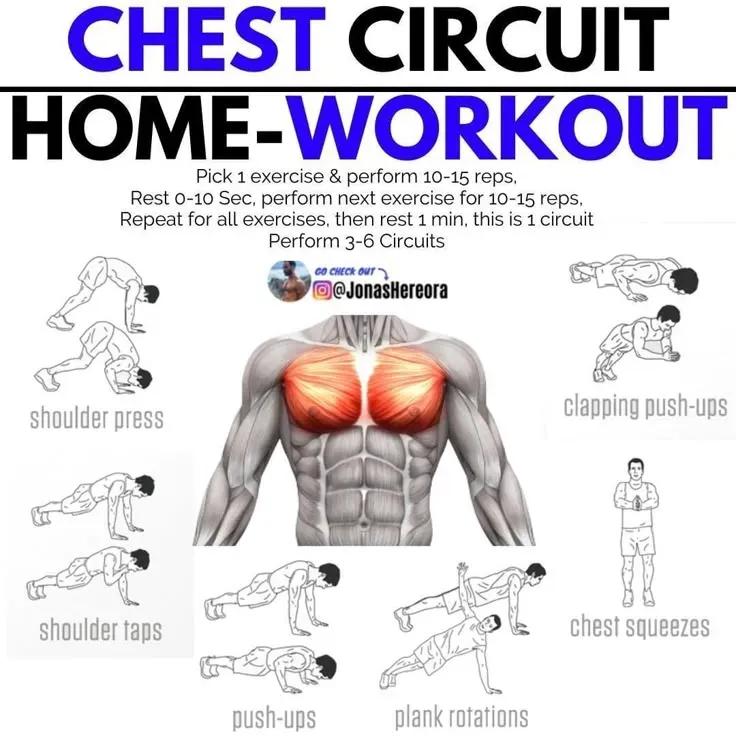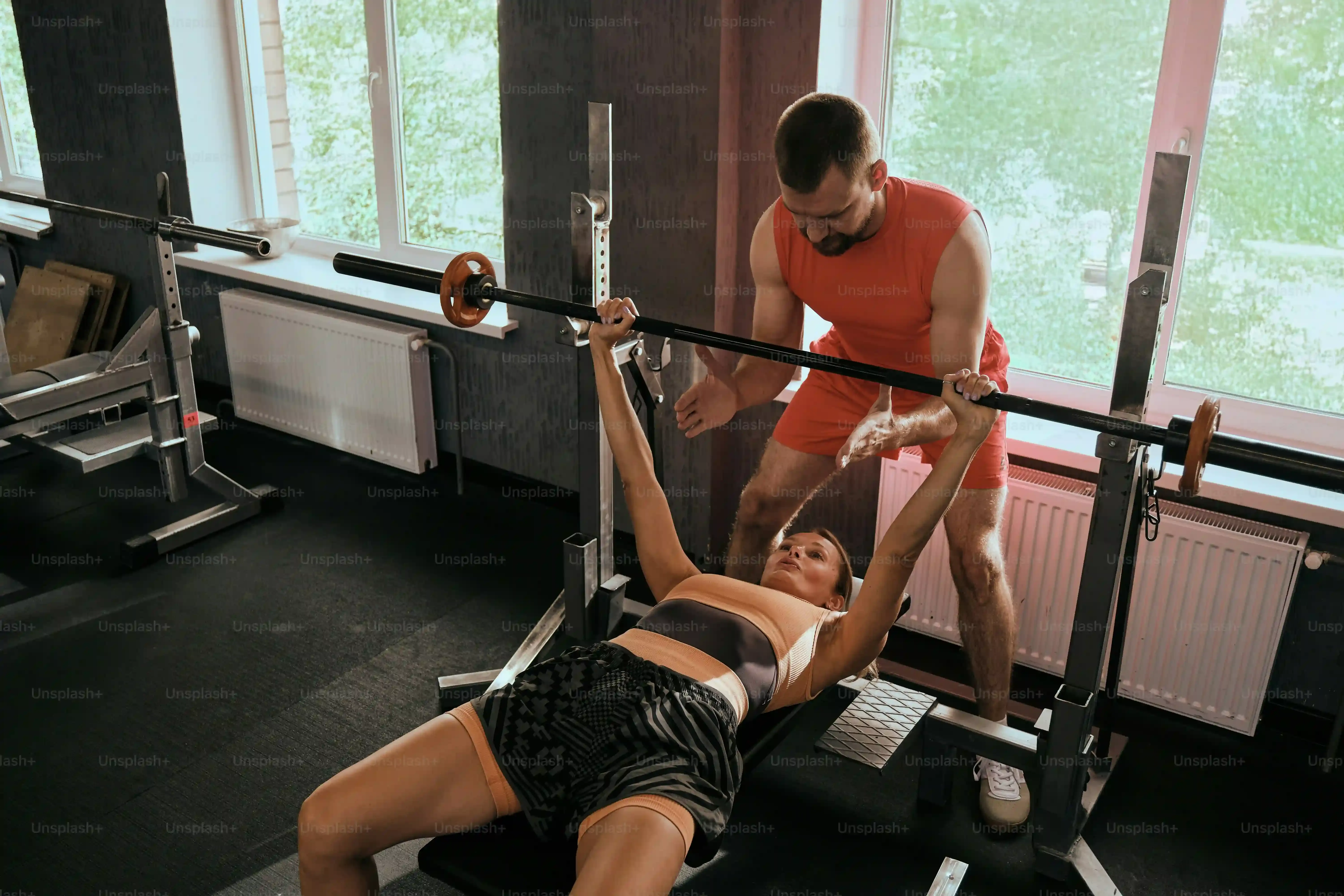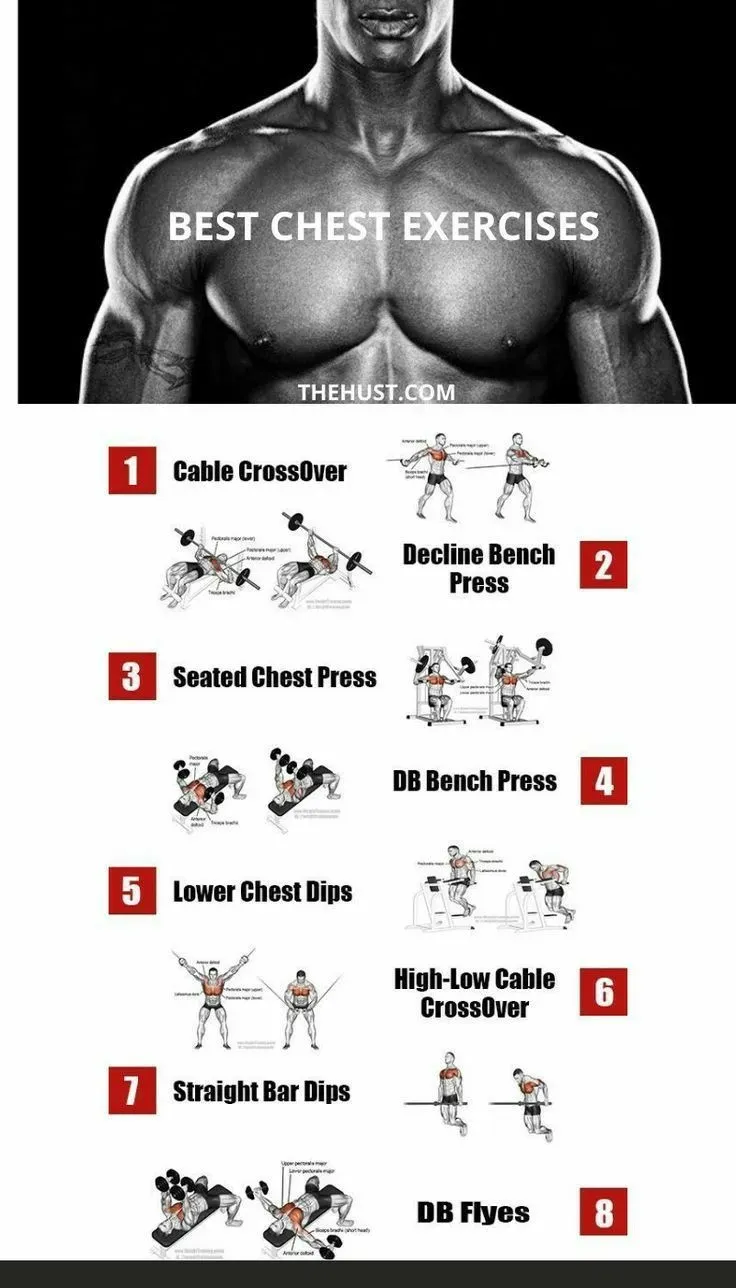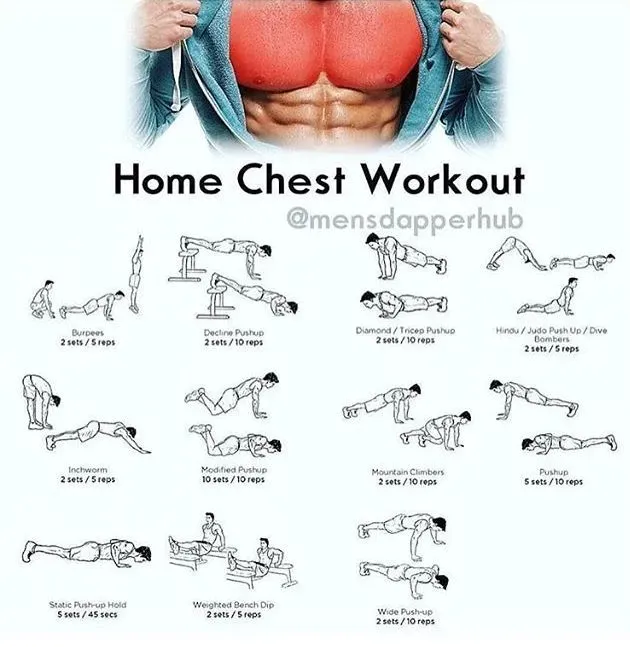Table of Contents
Tired of battling for bench press space or just prefer the convenience of your own four walls? Building a strong, sculpted chest doesn't require a gym membership or a basement full of expensive equipment. Many assume serious muscle gains only happen under clanging weights, but that's simply not the case. An effective **at home chest building workout** is not only possible but can be incredibly challenging and rewarding. This guide is for anyone looking to ditch the commute and build their pecs using bodyweight and minimal gear. We'll explore the overlooked advantages of training your chest at home and dismantle the myth that it's less effective than hitting the gym. You'll discover the core exercises that truly hit the chest, learn exactly how to combine them into a structured workout plan that adapts as you get stronger, and pick up strategies to keep making progress. Stop making excuses and start building the chest you want, right where you are.
Why an At Home Chest Building Workout Works

Why an At Home Chest Building Workout Works
Accessibility and Convenience
Look, life gets in the way. Gym commutes eat time, membership fees bite the wallet, and sometimes you just don't want to leave the house. That's where an **at home chest building workout** shines. You can literally roll out of bed and get started. No waiting for equipment, no judging eyes, just you and the floor. This isn't some watered-down version of training; it's a legitimate path to building muscle without the barriers of a traditional gym. Think about it: ten minutes of focused work at home is far more effective than skipping a planned gym session because you're tired or short on time.
Bodyweight is Not a Limitation
Forget the idea that you need heavy iron to build a solid chest. Your own bodyweight provides plenty of resistance. Push-ups, in their myriad forms, are a foundational exercise for a reason. They work the chest, shoulders, and triceps effectively. By changing your hand position, angle, or adding instability, you can target different parts of the chest and increase the difficulty significantly. I remember thinking bodyweight was just for beginners until I tried doing proper decline push-ups to failure. My chest was screaming just as much as after a heavy bench day.
- No gym required.
- Saves time and money.
- Trains stabilizing muscles better.
- Develops real-world strength.
- Allows for high-frequency training.
Progression is Built-In
How do you keep getting stronger without adding plates? Simple: manipulate the exercise. Move from standard push-ups to decline push-ups, then to one-arm push-ups (or assisted versions). Change the tempo, add pauses, or increase the volume. The variations are almost endless, each one offering a new challenge to stimulate muscle growth. This forced creativity actually makes you more aware of your body and how to apply tension effectively, which is a skill that transfers back to weighted exercises if you ever return to the gym.
Essential Exercises for Your At Home Chest Building Workout

Essential Exercises for Your At Home Chest Building Workout
Foundation Movements
so you're convinced bodyweight isn't just for warm-ups. Now, what actually builds the chest at home? It starts with the basics, primarily variations of the push-up. Think of the standard push-up as your bread and butter; it hits the entire chest, shoulders, and triceps complex. Elevating your feet onto a chair or couch shifts more emphasis to the upper chest, making decline push-ups a crucial move for that often-stubborn area. Conversely, elevating your hands (like doing push-ups against a counter or wall) makes it easier, perfect for beginners to build strength before hitting the floor. Diamond push-ups, with hands close together, torch the inner chest and triceps. These aren't just random moves; they are the building blocks for a solid **at home chest building workout**.
Structuring Your At Home Chest Building Workout for Results

Structuring Your At Home Chest Building Workout for Results
Setting Your Training Frequency
Alright, you've got the exercises down. Now, how often do you actually *do* this stuff? For a solid **at home chest building workout**, hitting the chest 2-3 times a week is a sweet spot for most people. This allows enough frequency to practice the movements and stimulate growth, but also gives your muscles time to recover and rebuild. Training chest everyday might sound hardcore, but it's usually counterproductive. Your muscles grow when you're resting, not when you're constantly tearing them down. Listen to your body; if you're still seriously sore from the last session, maybe take an extra day off or hit a different muscle group.
Choosing Exercises and Volume
For each workout, pick 3-4 exercises that target the chest from slightly different angles – maybe a standard push-up variation, a decline push-up variation, and something for the inner chest like diamond push-ups or even some chest flyes if you have resistance bands. Aim for 3-4 sets per exercise. The rep range depends on the exercise difficulty for you. If you can do 20+ reps easily, you need a harder variation. If you're struggling to get 5, maybe go for an easier version or use knee push-ups to build up strength. The goal is to challenge yourself within the 8-15 rep range for most sets to really drive hypertrophy.
Exercise Type | Target Area | Progression Example |
|---|---|---|
Standard Push-up | Overall Chest | Elevated Push-ups -> Floor Push-ups -> Decline Push-ups |
Diamond Push-up | Inner Chest, Triceps | Wide Push-ups -> Standard Push-ups -> Diamond Push-ups |
Decline Push-up | Upper Chest | Floor Push-ups -> Feet on Low Box -> Feet on High Box |
Applying Progressive Overload at Home
Muscle growth stops when your body adapts. To keep building, you have to constantly make your **at home chest building workout** harder. This is progressive overload. Since you can't add weight easily, you add reps or sets when an exercise gets too easy. If you can do 15 reps of a push-up variation for all sets, it's time to move to a harder variation, change the tempo (slow down the lowering phase), add pauses at the bottom, or reduce rest time between sets. You could also try adding a plyometric element, like clapping push-ups, if your joints can handle it. Don't just go through the motions; actively seek ways to challenge yourself each week.
Maximizing Gains with Your At Home Chest Building Workout

Maximizing Gains with Your At Home Chest Building Workout
Maximizing Gains with Your At Home Chest Building Workout
so you've nailed down the exercises and structured your routine. But just doing push-ups three times a week won't magically build a massive chest forever. To truly maximize gains with your **at home chest building workout**, you need to think beyond just the movements themselves. It’s about dialing in other factors that influence muscle growth and pushing the intensity when you're actually working out. We're talking about making every rep count and giving your body the fuel and rest it needs to actually build new tissue.
Fueling Your Growth
You can't build muscle out of thin air, no matter how perfect your push-up form is. Your body needs protein to repair and build muscle fibers after you break them down during your workout. Aim for around 0.7-1 gram of protein per pound of bodyweight daily. Get it from sources like chicken, fish, eggs, dairy, or plant-based options like beans and lentils. Don't neglect carbs either; they provide the energy for those intense sets and help with recovery. Think of your diet as the construction crew for your chest; without the right materials, nothing gets built.
Hydration is another unsung hero. Being even slightly dehydrated can impact your performance and recovery. Keep a water bottle handy and sip throughout the day, not just when you feel thirsty. Electrolytes aren't just for sports drinks; getting enough sodium, potassium, and magnesium helps with muscle function and nerve signals, crucial for pushing through those tough final reps.
The Mind-Muscle Connection
This sounds a bit "woo-woo," but hear me out. When you're doing push-ups, are you just trying to get from point A to point B? Or are you actively squeezing your chest muscles throughout the movement? Focusing on feeling the chest contract and stretch makes a huge difference. It's about making the muscle do the work, not just letting your joints and momentum take over. Try slowing down the eccentric (lowering) phase of your push-ups and really feel the stretch in your chest. Pause at the bottom and the top, consciously flexing your pecs. This deliberate focus can significantly increase muscle activation.
- Focus on the squeeze at the top.
- Control the lowering phase (2-3 seconds).
- Pause briefly at the bottom stretch.
- Visualize the muscle working.
- Reduce distractions; be present in the movement.
Adding Intensity Techniques
Once standard sets of a variation get easy, you need to ramp up the intensity without necessarily changing the exercise itself immediately. Techniques like rest-pause, where you do a set to near failure, rest for a short period (10-15 seconds), and then squeeze out a few more reps, can push your muscles past their usual limit. Drop sets, where you immediately switch to an easier variation after hitting failure on a harder one (like going from decline to standard push-ups), are brutal but effective for accumulating volume and fatigue in the muscle.
Another method is incorporating isometric holds. Hold the bottom position of a push-up for 10-20 seconds after your final rep. This static tension can create a powerful stimulus. Just don't try to do all of these in one workout; pick one or two techniques per session to add that extra push. The goal is to make the muscle work harder in the given rep range.
Consistency and Recovery are Non-Negotiable
The fanciest workout plan is useless if you don't stick to it. Consistency is the bedrock of any successful training program, especially an **at home chest building workout**. Show up, put in the work, and do it regularly. Muscle growth takes time and consistent effort. Don't expect miracles overnight, or even over a few weeks. Track your progress – maybe jot down how many reps of each variation you can do. Seeing those numbers go up is motivating and confirms you're on the right track.
Equally important is recovery. Your muscles don't grow when you're lifting; they grow when you're resting and recovering. Aim for 7-9 hours of quality sleep per night. This is when your body does most of its repair work. Skipping sleep is like trying to build a house without letting the cement dry. It just won't stand up. Proper recovery ensures you're ready to hit your next workout hard and make continued progress.
Recovery Factor | Why It Matters | Actionable Tip |
|---|---|---|
Sleep | Muscle repair and growth hormones released | Aim for 7-9 hours nightly |
Nutrition | Provides building blocks (protein) and energy (carbs) | Eat balanced meals; hit protein target |
Hydration | Essential for muscle function and nutrient transport | Drink water throughout the day |
Rest Days | Allows muscles to recover and adapt | Schedule rest days between chest workouts |
Your At Home Chest Building Journey Continues
So there you have it. Building a strong chest doesn't hinge on a gym address or fancy machines. Your own bodyweight, a bit of space, and consistent effort are the real ingredients for an effective **at home chest building workout**. We've covered the fundamentals, the key movements, and how to put it all together. Progress isn't linear, and some days will feel tougher than others, but sticking with it, focusing on form, and pushing for those extra reps will yield results. Stop waiting for the perfect gym setup. Start building your chest today, right where you are. The equipment isn't the magic bullet; your consistency is.
